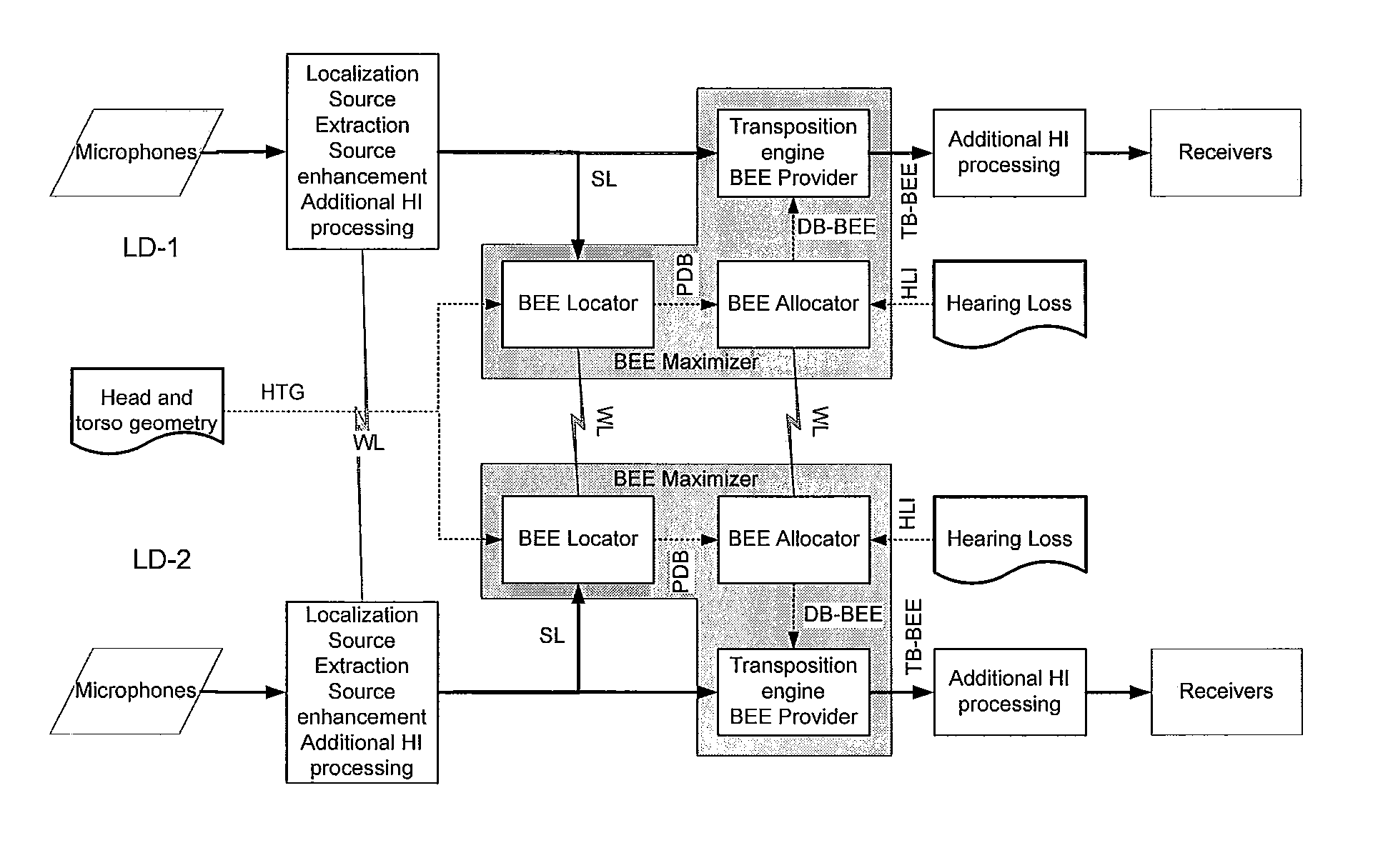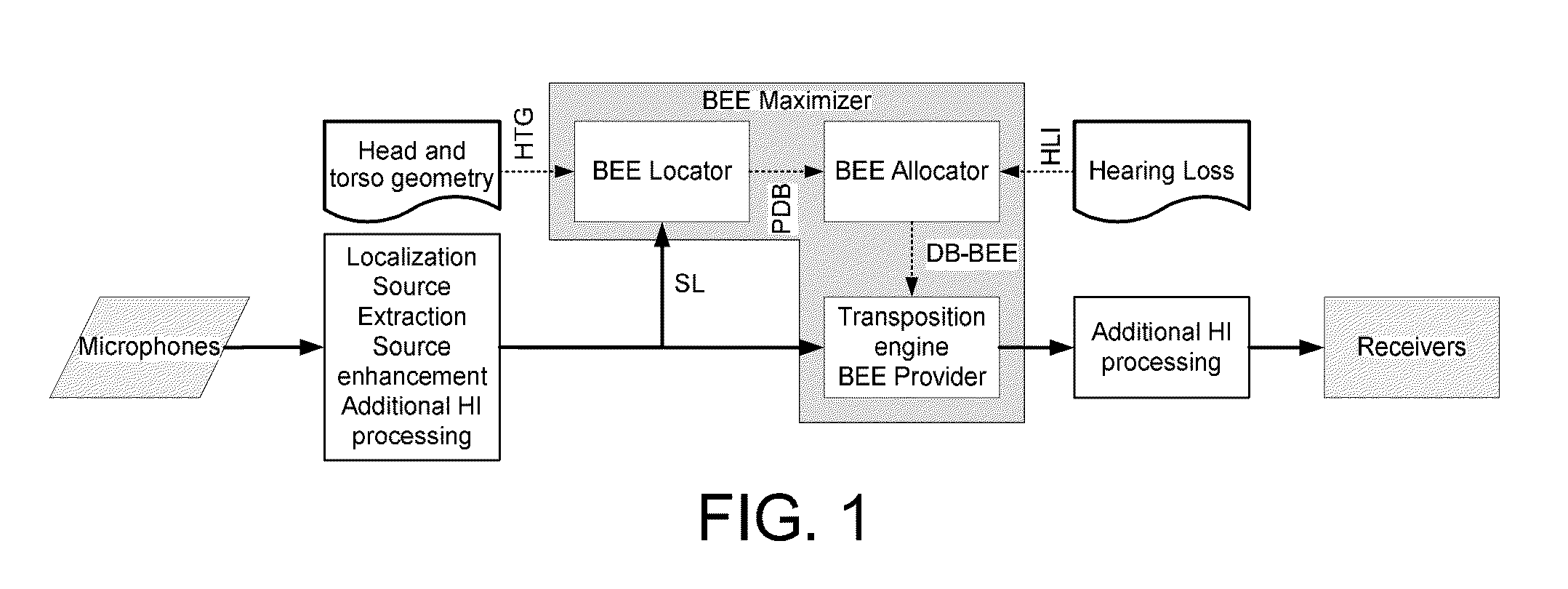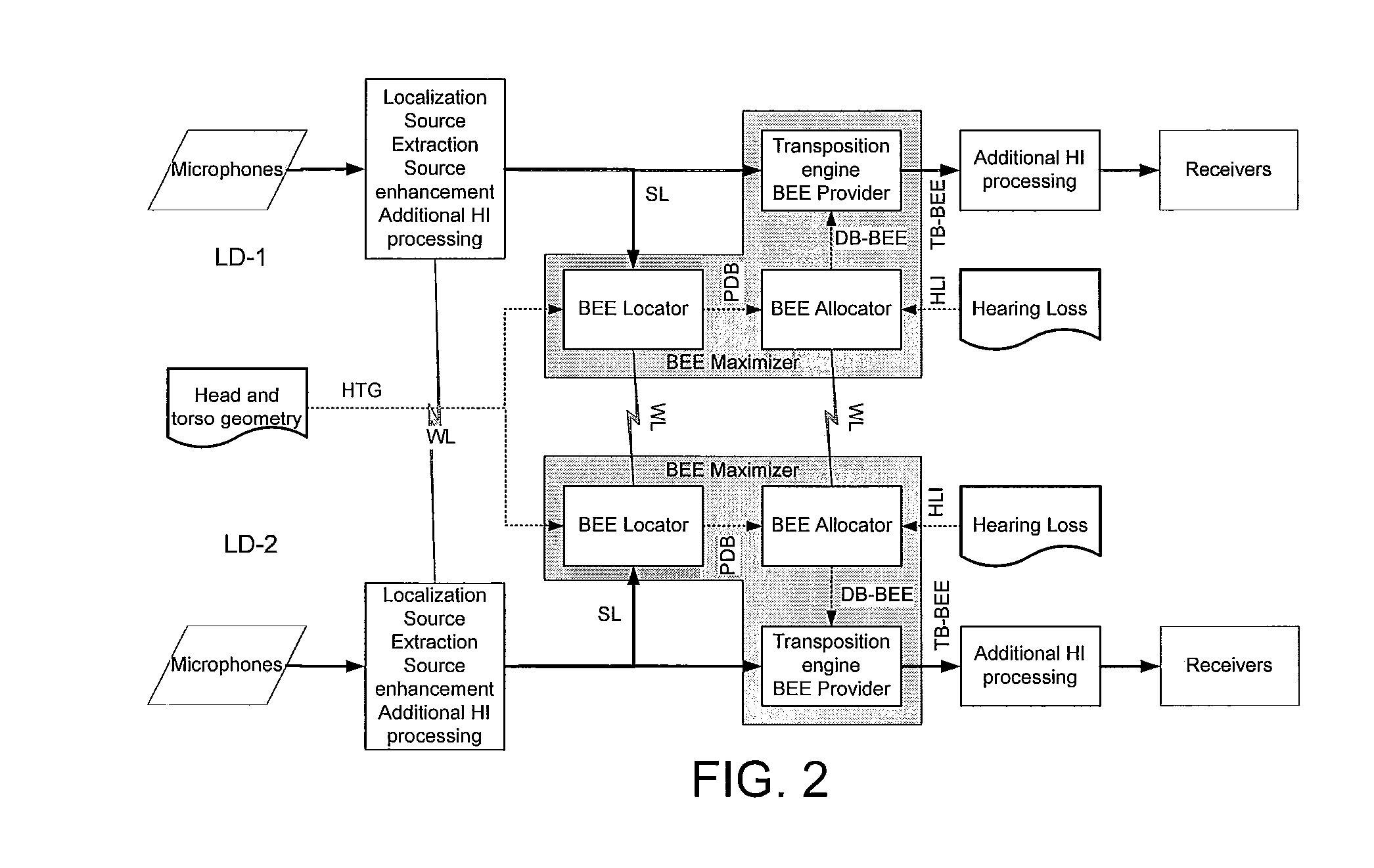Method and a binaural listening system for maximizing a better ear effect
a listening system and binaural technology, applied in the field of listening devices, can solve the problems of reduced spatial hearing ability, most sufferers of hearing loss, and most often have problems detecting high frequencies in sound signals
- Summary
- Abstract
- Description
- Claims
- Application Information
AI Technical Summary
Benefits of technology
Problems solved by technology
Method used
Image
Examples
Embodiment Construction
[0076]The present disclosure relates to the Better Ear Effect and in particular to making it available to a hearing impaired person by Adaptive Frequency Transposition. The algorithms are based on a unique combination of an estimation of the current sound environment (including sound source separation), the individual wearers hearing loss and possibly information about or related to a user's head- and torso-geometry.
[0077]In a first aspect, Ear, Head, and Torso Geometry, e.g. characterized by Head Related Transfer Functions (HRTF), combined with knowledge of spectral profile and location of current sound sources, provide the means for deciding upon which frequency bands that, at a given time, contribute most to the BEE seen by the listener or the Hearing Instrument. This corresponds to the system outlined in FIG. 1.
[0078]FIG. 1 shows a block diagram of an embodiment of a listening device comprising a BEE maximizer algorithm, implemented without exchanging information between listeni...
PUM
 Login to View More
Login to View More Abstract
Description
Claims
Application Information
 Login to View More
Login to View More - R&D
- Intellectual Property
- Life Sciences
- Materials
- Tech Scout
- Unparalleled Data Quality
- Higher Quality Content
- 60% Fewer Hallucinations
Browse by: Latest US Patents, China's latest patents, Technical Efficacy Thesaurus, Application Domain, Technology Topic, Popular Technical Reports.
© 2025 PatSnap. All rights reserved.Legal|Privacy policy|Modern Slavery Act Transparency Statement|Sitemap|About US| Contact US: help@patsnap.com



